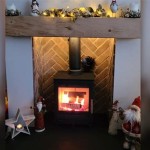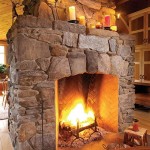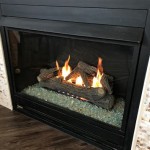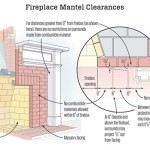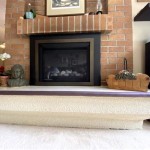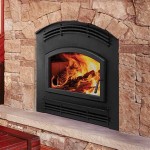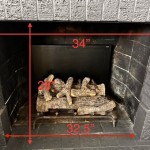Mounting A TV Above A Fireplace: Considerations and Procedures
Mounting a television above a fireplace is a popular design choice, offering a visually appealing and space-saving arrangement. However, this installation presents unique challenges that require careful consideration. Before proceeding, it is crucial to assess the potential risks, plan meticulously, and execute the mounting process with precision.
The allure of a television positioned above a fireplace often stems from its ability to create a focal point in a living space. It consolidates entertainment and warmth into a single area, potentially enhancing the room's aesthetics and functionality. However, the feasibility of this arrangement depends on several factors related to the fireplace itself, the wall structure, the television's specifications, and the viewing environment.
Understanding the Potential Drawbacks
The primary concern when mounting a TV above a fireplace is the potential for heat damage. Fireplaces, whether gas or wood-burning, generate significant heat that can rise and affect the television's internal components. Excessive heat exposure can lead to premature failure of electronic components, screen discoloration, and diminished lifespan of the device. The severity of this risk depends on the type of fireplace, its usage frequency, and the presence of a mantel or heat shield.
Another consideration is viewing ergonomics. TVs mounted too high can cause neck strain and discomfort, especially during extended viewing sessions. The optimal viewing angle typically positions the screen at eye level when seated. When mounted above a fireplace, the screen is often significantly higher, forcing viewers to tilt their heads upwards, which can lead to fatigue and musculoskeletal issues over time.
Furthermore, the installation process itself can be complex and potentially damaging to the wall structure. Brick or stone fireplaces require specialized drilling and anchoring techniques, while drywall walls may necessitate reinforcement to support the television's weight. Improper installation can result in a compromised mount, posing a safety hazard.
Assessing Fireplace and Wall Compatibility
Before initiating the mounting process, a thorough assessment of the fireplace and wall is essential. The type of fireplace is a crucial factor. Gas fireplaces typically produce less heat than wood-burning fireplaces, reducing the risk of heat damage to the television. However, even with gas fireplaces, prolonged use can still generate substantial heat.
The presence of a mantel plays a significant role in mitigating heat exposure. A properly sized mantel can deflect rising heat away from the television, creating a thermal barrier. The depth and material of the mantel are key considerations. A deeper mantel offers greater protection, and non-combustible materials like stone or metal are preferable to wood.
The wall's construction is another critical aspect. Drywall walls require sturdy mounting brackets and potentially additional support to prevent the television from pulling away from the wall. Stud finders can help locate wall studs, which provide a secure anchor point for the mounting bracket. Brick or stone fireplaces present their own challenges, requiring specialized masonry drill bits and anchors designed for these materials.
In addition to the wall structure, consider the accessibility of electrical outlets and cable connections. Running cables behind the wall requires careful planning and may involve drilling holes and routing wires through wall cavities. The electrical code must be followed, ensuring that all wiring is properly insulated and protected.
Implementing Safe Mounting Procedures
Once the assessment is complete, the mounting process can begin. Safety should be the paramount concern. Before working with electrical wiring, ensure the power is turned off at the breaker. Wear appropriate safety gear, including eye protection and gloves, to protect against dust, debris, and potential electrical hazards.
The first step is to select an appropriate mounting bracket. A tilting mount is often recommended for TVs mounted above fireplaces, allowing viewers to adjust the screen angle for optimal viewing. The bracket's weight capacity should exceed the television's weight to ensure a secure and stable installation. Consider a full-motion mount to provide maximum flexibility in adjusting the screen's position.
Using a stud finder, locate the wall studs behind the drywall. Mark the stud locations and align the mounting bracket accordingly. Drill pilot holes at the marked locations and securely attach the bracket to the studs using lag bolts. If mounting to brick or stone, use a masonry drill bit to create pilot holes for the appropriate anchors. Ensure the anchors are firmly seated and can support the television's weight.
Before mounting the television, connect all necessary cables, including power, HDMI, and any other required connections. Running cables behind the wall can create a cleaner and more organized appearance. Use cable concealers or wall plates to hide the wires and prevent them from dangling.
With the mounting bracket securely attached to the wall and the cables connected, carefully lift the television and attach it to the bracket. Ensure the television is properly aligned and secured according to the manufacturer's instructions. Use a level to verify that the television is mounted straight. Test the tilting mechanism (if applicable) to ensure it functions smoothly and provides the desired viewing angle.
Once the television is mounted, manage the cables to prevent them from obstructing the fireplace or creating a safety hazard. Use cable ties or clips to bundle the cables together and secure them to the wall. Consider installing a surge protector to protect the television from power surges.
After the installation is complete, monitor the temperature above the fireplace during operation. Use a thermometer to measure the temperature near the television to ensure it remains within acceptable limits. If the temperature exceeds the manufacturer's recommendations, consider installing a heat shield or reducing the fireplace's usage.
Regularly inspect the mounting bracket and anchors to ensure they remain secure. Over time, vibrations and temperature fluctuations can loosen the screws or anchors, compromising the stability of the mount. Periodically tighten the screws and check the anchors for any signs of wear or damage.
Professional installation is recommended if you are uncomfortable with any aspect of the mounting process. A qualified installer has the expertise and tools to ensure a safe and secure installation, minimizing the risk of damage to the television or wall structure. They can also advise on the best mounting options and cable management solutions for your specific situation.
Selecting the right size TV for the designated space is also vital. Too large a screen can be overwhelming and uncomfortable to view, especially at a higher viewing angle. Consider the viewing distance and room dimensions when choosing a television size to ensure an optimal viewing experience. Consult with a home entertainment professional for guidance on selecting the appropriate TV size and resolution for your needs.
Proper ventilation around the television is crucial to prevent overheating. Ensure there is adequate airflow around the back and sides of the television to dissipate heat. Avoid blocking the ventilation ports, as this can lead to increased temperatures and potential damage. If necessary, consider installing a ventilation fan to improve airflow around the television.
Integrating the television into the room's overall design is another important consideration. Choose a mounting bracket and cable management solutions that complement the room's aesthetics. Consider concealing the cables behind the wall or using decorative cable concealers to create a clean and organized appearance. Coordinate the color and style of the mounting bracket with the fireplace surround and other decorative elements in the room.
Alternatives to Mounting Above a Fireplace
If the risks associated with mounting a TV above a fireplace are too significant, consider alternative placement options. Mounting the television on a nearby wall or using a freestanding TV stand are viable alternatives that eliminate the risk of heat damage and improve viewing ergonomics. A corner mount can also be a good option if space is limited.
Another option is to relocate the fireplace altogether. If the fireplace is not essential to the room's function or design, consider removing it or moving it to a different location. This eliminates the need to mount the television above the fireplace and allows for more flexible placement options.
Ultimately, the decision of whether or not to mount a TV above a fireplace depends on a careful assessment of the potential risks and benefits. By considering the factors outlined above, you can make an informed decision that ensures a safe, functional, and aesthetically pleasing installation.

Can I Mount My Tv Above The Fireplace

Can I Mount My Tv Above The Fireplace

Putting A Tv Above The Fireplace May Not Be Such Bad Idea After All

Safely Mount A Tv Above An Electric Fireplace Touchstone Home S Inc

Ortal S Innovative Technology Makes It Safe To Mount A Tv Above Your Fireplace

How To Mount A Tv Over Fireplace Vertical Chimney Care

3 Alternatives To Mounting Your Television Above The Fireplace Avs

Is It Safe To Mount Your Tv Above The Fireplace Chimney And Wildlife

Should You Mount Your Tv Above A Fireplace Digital Trends
Can I Mount A Tv Over My Fireplace Heatilator

